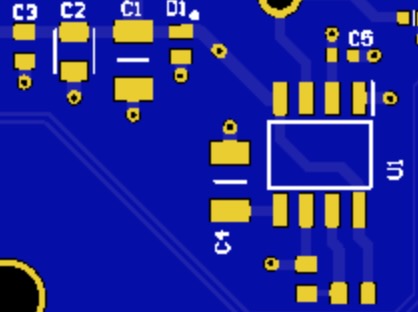Exact Measurement? For Innovation, and Progress
A coherence-based Noise Reduction System, approaches a time-independent reference, or exact standard, for the measurement of time. Download summary of scientific research here.
Increasing The Validity Of The Measurement System

Areas of Application of Coherence Technology Pdf download here: https://www.upgradingtechnology.com/support-files/areasofapplication.pdf
Coherence Technology™ with its Quantum Noise Reduction System™ (QNRS™) increases the internal integrity within technologically generated signals to improve overall technological performance.
As science and technology progress into smaller time and distance scales, precision in measurement becomes increasingly essential for continued improvements in technological performance. Whatever technology we consider, nuclear, nano, genetic, chemical, or electrical, precise measurement is key to gaining certainty in results. Coherence Technology provides a way to increase precision in measurement without sacrificing accuracy.
What Limits Technological Progress?
Insufficient Precision
The problem that science and technology face today is that the current approach for measuring time and motion is based on approximation. Because the measurement is not exact, it has a limiting effect on technological progress. Discrepancies lead to uncertainty in outcomes. And even though technologies become more powerful as they enter into smaller time and distance scales, they also require greater precision if they are to have a beneficial impact across the spectrum.
Coherence Industries (CI) has developed a way to increase precision in technological motion, while also maintaining accuracy. By increasing precision and reducing uncertainty, modern science and technology can accelerate progress and improve the quality of life for society.
Let's look more closely into what is happening on these small scales that give rise to problems on many seemingly unrelated levels.
In the example of electronic data, accuracy is the information and precision is the repeatability of that information. If the information is incorrect, then we can correct it to our liking. But when the repeatability is off, the repeating information is not properly replicated over time and distance. The information content becomes degraded, skewed, or distorted. Degraded information adds to technical problems. It is also more difficult for living systems to pick up, translate, process, and use the information content that is carried by the degraded information signal.
What is the End Result of Insufficient Precision? The end result of degraded information, above and beyond the technical difficulties, is the problems that arise when this degraded information interfaces with living systems. That's when we begin to find the chronic problems, stress, illness, and pollution that arise from this lack of integration between technology and the natural world.
The flaw of degraded information is inherent in the way we reproduce technologically generated signals in that although they are accurate, they are lacking in precision. This lack of precision originates in the measurement system used in our technologies.
What happens with the increase of precision in technologically generated signals?
- Increase in the effectiveness and efficiency of technology.
- Increase in the integration/ compatibility between technological motion and biological motion.
- Increase in the effectiveness and efficiency of cognitive function for decision making. (spontaneously opens individual intelligence to cosmic intelligence)
- Increase in integration/ compatibility between technology and the natural world (through complex systems)
The beneficial Impact for both technology and natural systems has been measured in a number of ways, (see summary of scientific research on Coherence Technology).
IQS test (see column to the right) identifies an increase in precision at the envelope of an electronic information signal. Also we see an increase in signal to noise ratio. The envelope of an electronic information signal is the interface between the electronic signal version of the information and the neuro physiological version of the information.
- The increase in precision and underlying coherence makes the information more available for the senses to pick up, the brain to process, and use.
- This ease in absorbing more coherent information is measured as increases in bio electric conductivity, improved global EEG brain coherence, improved task performance, and is further illustrated by reduced heart rate, and increased bio electric conductivity, showing a greater flow of information through the nervous system. These beneficial changes were found with the application of Coherence Industries' Quantum Noise Reduction System™ QNRS™.
To illustrate the importance of not losing information in the replication process we can look at the example of DNA and RNA. DNA maintains the information and the RNA implements the information over and over, referencing the information held by the DNA. If the information in the DNA is off, we have one type of problem. And if the repeatability is off then we have another set of problems.
Here are five basic areas of application for Coherence Technology:
- Hi fidelity/ technological performance. - Increasing certainty, repeatability, dependability, precision. Reducing discrepancies, friction, noise.
- User experience - Transforming user experience from agitation to comfort.
- Brain training/Gaming - Developing the latent potential of the brain.
- Productivity - Automatically and effortlessly get more done.
- Innovation - Incorporate these benefits into any technology, product, or service.